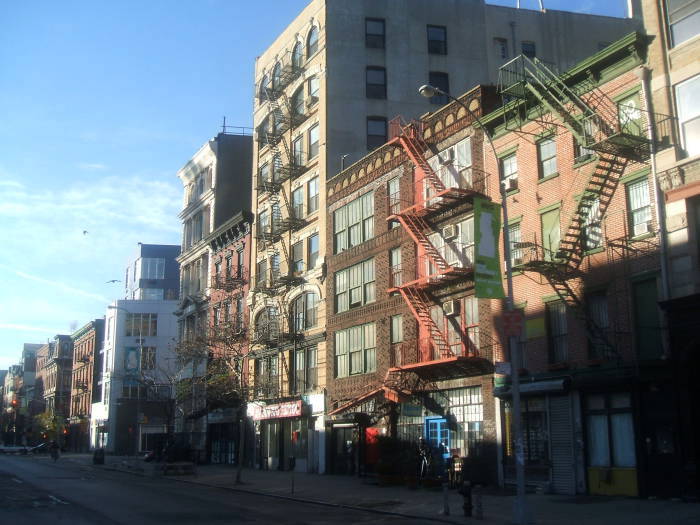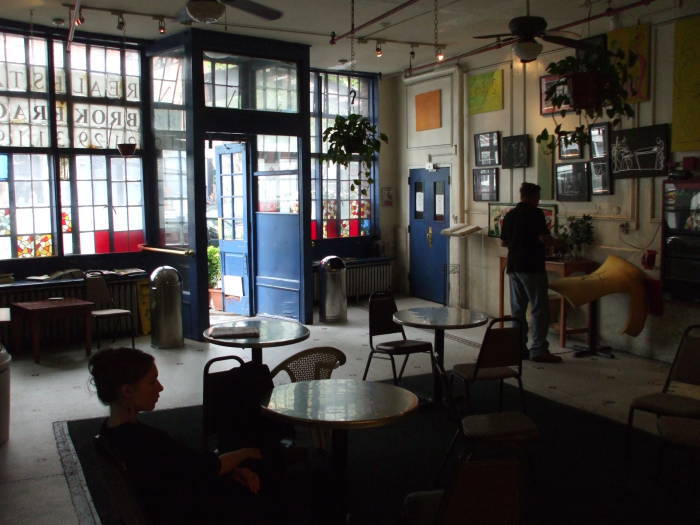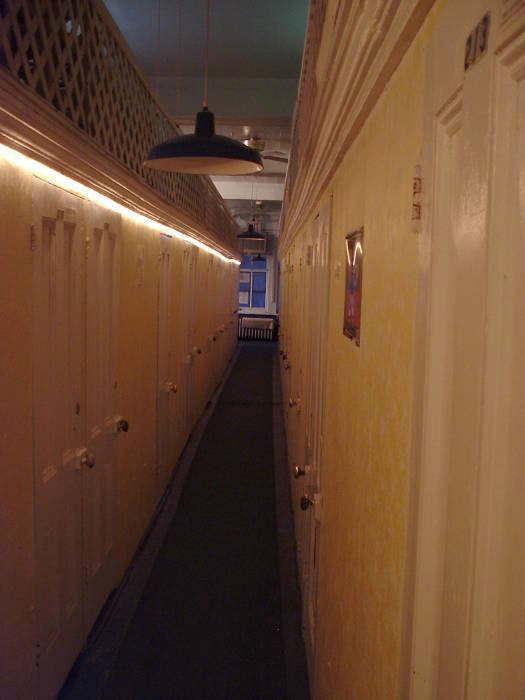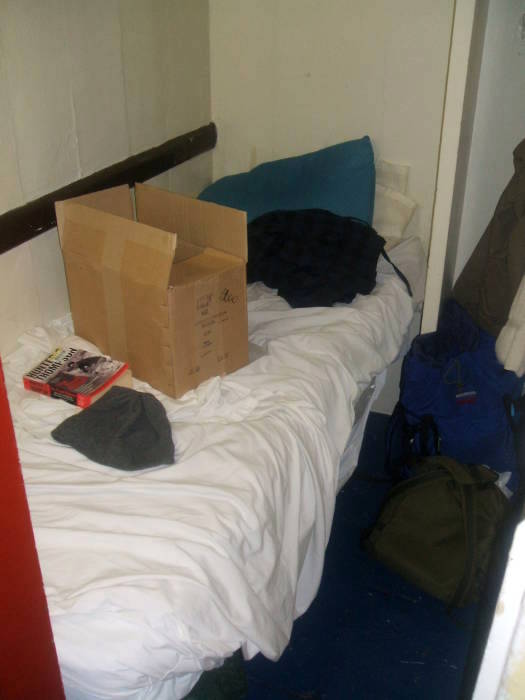
Edgar Allan Poe on the Streets of New York
The Safety of the Bronx

In which I find that The Bronx is relatively safe as far as Poe-house locations go, and Soviet-era hardware appears on the sidewalk.
Yeah, it's still the Bronx, but it's not the post-apocalyptic ghetto in west Baltimore or the ruined neighborhood in Philadelphia.
It's an interesting thing to see in New York, and not one of the stereotypical tourist things.
But first you must get to New York.
I was on the Chinatown bus out of Philadelphia.
Along the way you see the splendors of New Jersey from its famed Turnpike.
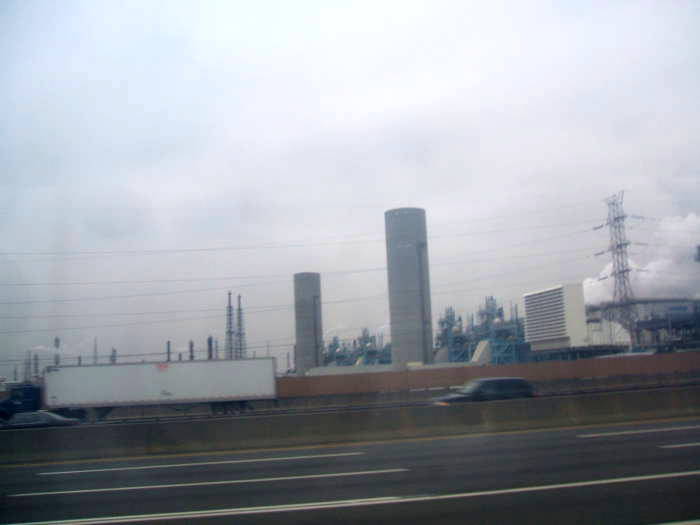
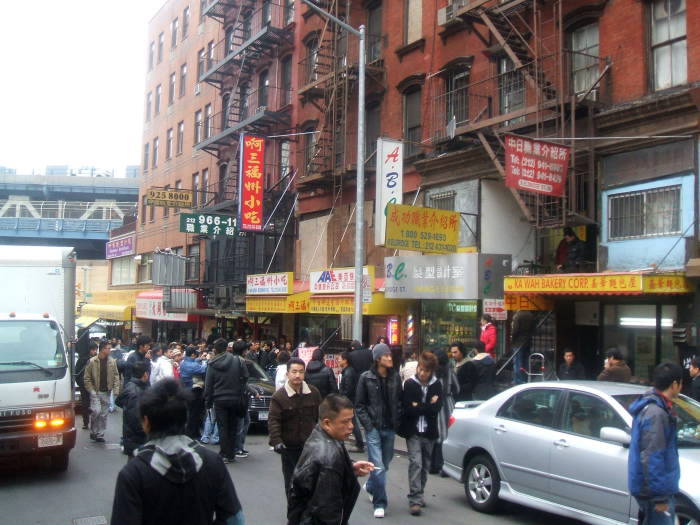
Yes, this looks like Chinatown.
We have arrived in New York.
First, find a place to stay.
The building with the blue door and red fire escape
is the
Whitehouse Hotel
at 340 Bowery on the edge of the East Village.
About US$ 32 a night for private rooms!
Here is the funky lobby. It used to be what I suppose you would call a flop house. A men's residential hotel. Well, no, it used to be entirely a flop house, now it's just partly so. The Whitehouse began as a lodging house in 1916. Places like these were known as SRO or Single Room Occupancy hotels. More places were built or converted in the 1940s as accommodations for men returning home from World War II. Many of the men checked in and never left, living here 50 years or more as the Bowery was "Skid Row" from the 1940s into the 1990s.
The rooms were usually called "cabins" and were just large enough for a short bed and storage cabinet. It seems that the walls typically did not go all the way to the ceiling, a trellis-like wooden framework was fastened across the wall tops.
The Bowery House hotel a few blocks south at 220 Bowery has a description of its similar history. The Bowery House was built in 1927 as the Prince Hotel. it was converted to temporary housing for returning soldiers, small cabins and communal bathrooms to maximize occupancy and income. Its "original cabins" have beds just 69 inches long. The Sunshine Hotel was at 241 Bowery, it announced in 2014 that it would downsize and converty the second and third floors into commercial lofts. Ace Hotel purchased 225 Bowery, formerly owned by the Salvation Army, for $30 million.
The White Houseand other
SRO hotels
Anyway, to the lodgings: Small, and I mean very small, rooms that are just a bed and a closet. All the plumbing is down the hall.
There are still some permanent residents on one side, but the rest provides cheap private (!) single and double rooms for travelers. By bed count it's about 25% permanent residents and 75% rooms for travelers.
A stairwell divides the permanent and transient sides. Unlocked doors open into the permanent side. A notice I saw taped to the inside of that door announced that the permanent residents were no longer allowed into the lounge area behind the front desk on the ground floor, due to some problems with personal hygiene, alcohol abuse, bedbug transmission, and psychiatric issues.
The transient side, where travelers get rooms, is accessed through locked doors off the other side of the stairwell.
Let's look down a passageway and into my room on the transient side.
Below you see my room on this visit. Yes, this is the entire room, I am standing in the hallway looking in through the door.
The length of the single bed is the larger dimension of the room, just a few inches over six feet. Side to side it's maybe five feet.
But how much space do you really need when you're not going to do anything but sleep, change clothes, and store things in your room?
As for that cardboard box, more on that later....
|
I lay there in my open-top cubicle room looking at the ceiling. ... I listened to the grunts and squeals and snarls in the nightmare half-light of random, broken lust. |
It was like the room of a Russian saint: one bed, a candle burning, stone walls that oozed moisture, and a crazy makeshift ikon of some kind that he had made. On The Road, Jack Kerouac |
Amazon
ASIN: 0375503226
The New York City Landmarks Preservation Commission designated the NOHO Historic District Extention in 2008, including Bowery Numbers 330-344 (page 54-62 of the report). It says:
The original owner was Eusebio Ghelardi. References mentioning it include Flophouse: Life on the Bowery by David Isay and Stacy Abramson (New York: Random House, 2000).
Off to the Bronx!
Poe's home is at 2640 Grand Concourse, in the area of the Bronx known as Fordham. Take the B/D MTA line to either Kingsbridge Road or Fordham Road, the home is about half-way between them.
The home appears on the Bronx bus map as "Poe Cottage", which is accurate. Much more cottage than house.
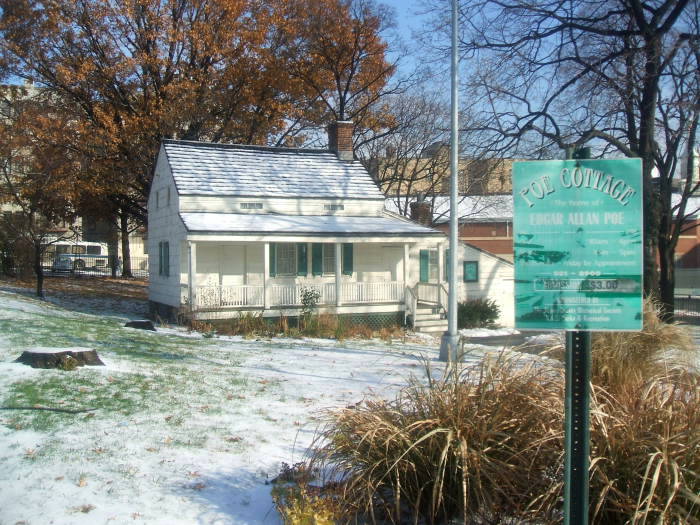
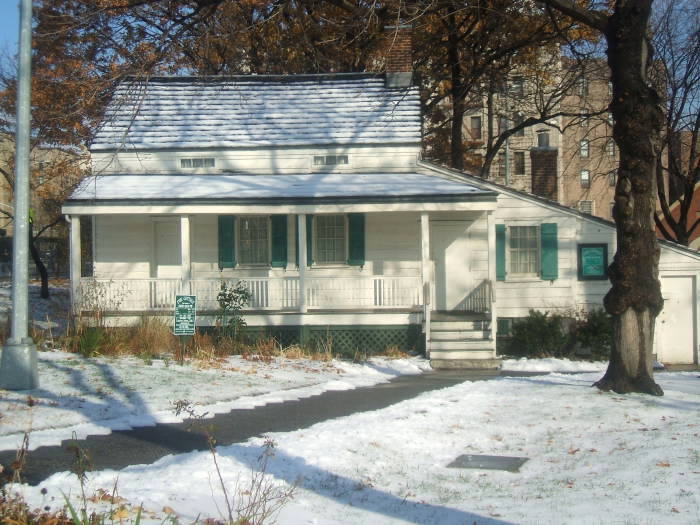
Poe moved there around May 1846. Back then the heavy settlement would have stopped around today's mid-town Manhattan, and there would have been open land around his place and between there and more heavily settled areas. Fordham was quite rural, and was connected to the city by rail.
Poe's final short story "Landor's Cottage" was probably inspired by the home.


This was Poe's final home. He died while visiting Baltimore three years after moving here.
Among other things, he wrote "Annabel Lee" and "Ulalume" and published quite a bit of literary criticism while living here.
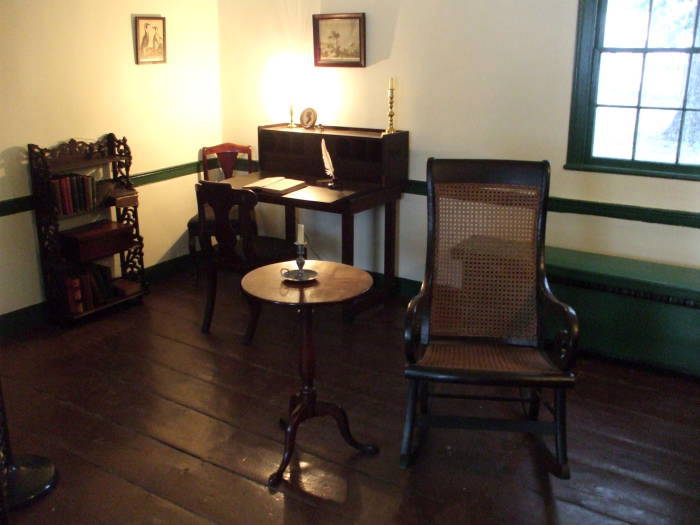

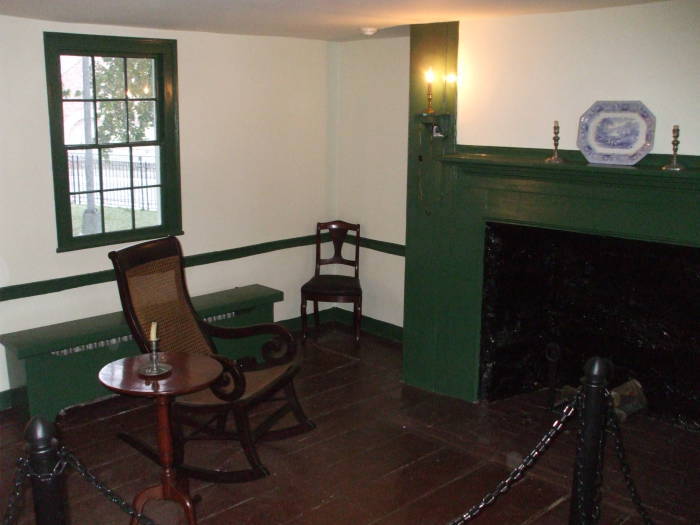
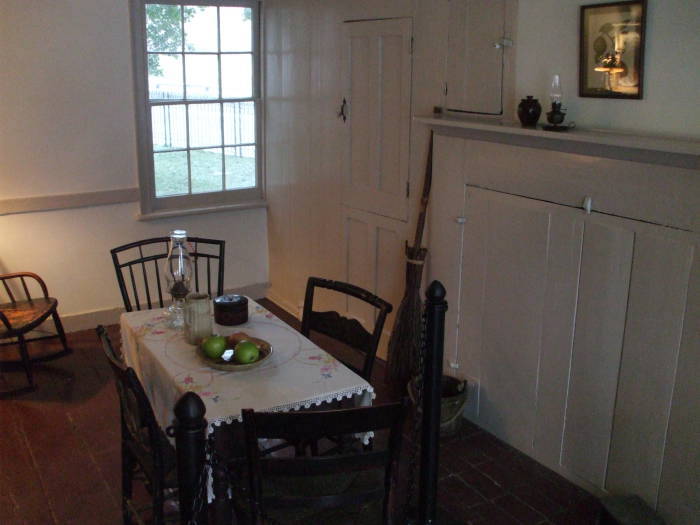
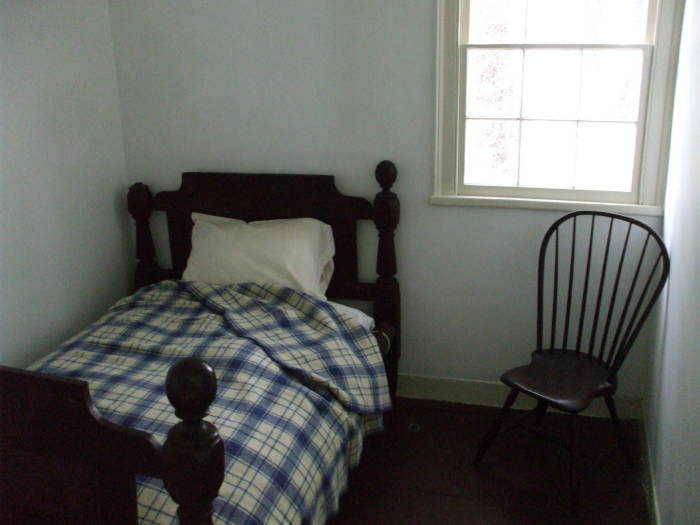
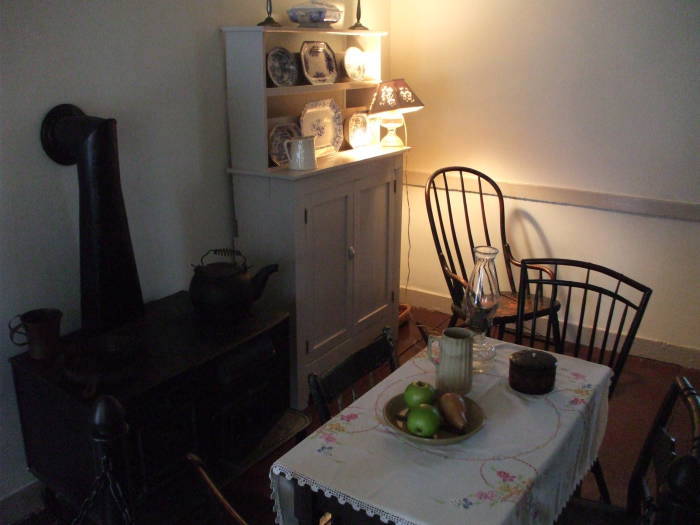
This visit to New York was just before Christmas. Lots of Christmas trees were for sale along the sidewalks. And, as you see below, there were lots of Christmas lights.
Unlike in Washington, the Christmas trees were lighted and not secured behind multiple layers of chain-link fencing.
Well, that's the Liberal Elite for you, putting up Christmas decorations. That sort of behavior will only encourage the terrorists. Or so Dick Cheney wants us to think.
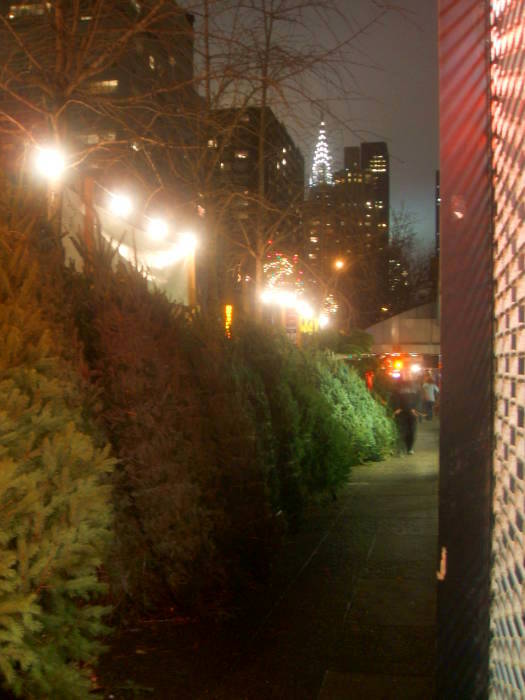
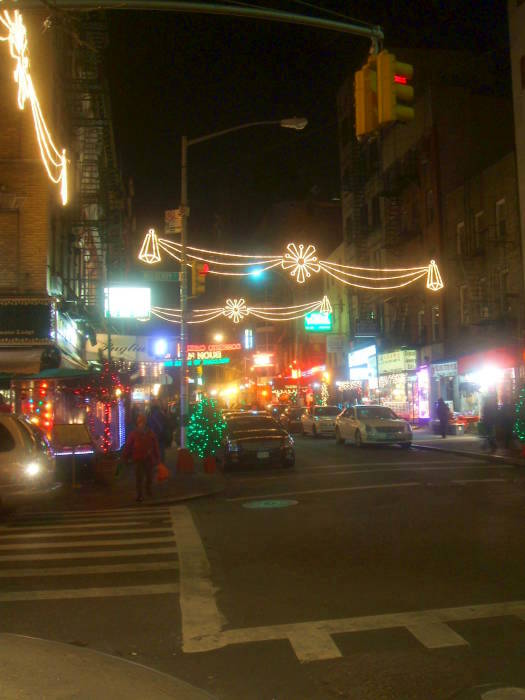
Let's look around New York and see some of these dangerously accessible Christmas decorations!
Here are street scenes in Little Italy, the courtyard at Lincoln Center, Bloomingdale's department store, 5th Avenue through Midtown and Rockefeller Center, and Washington Square Park in Greenwich Village:

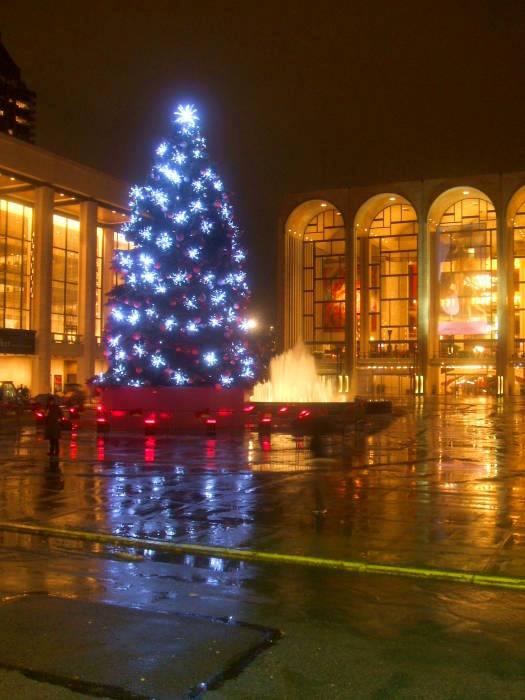
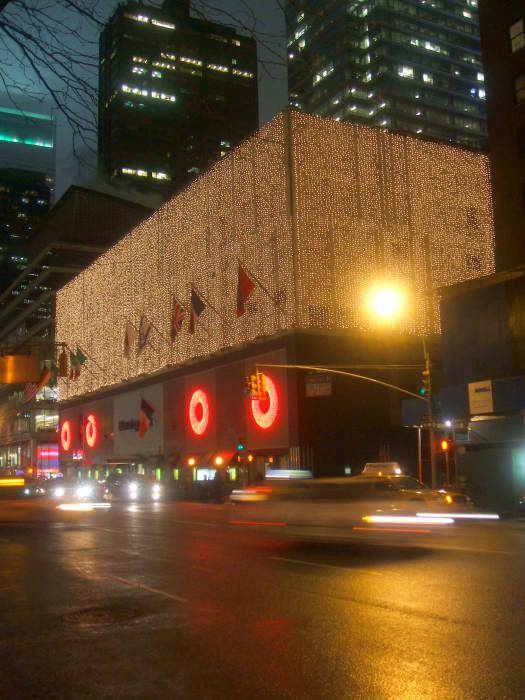
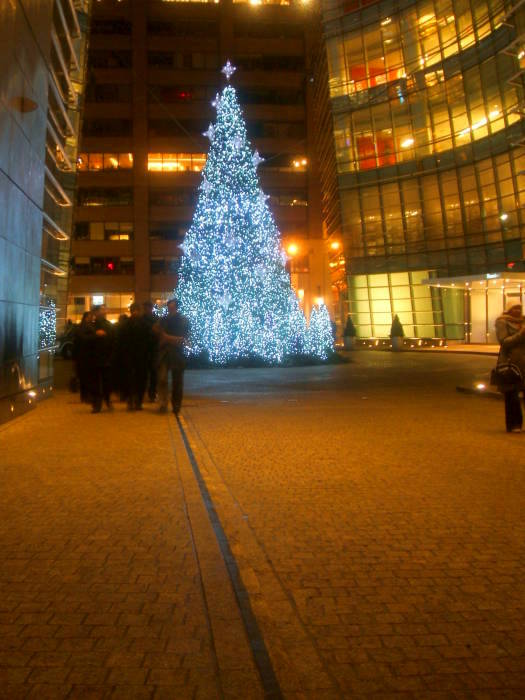


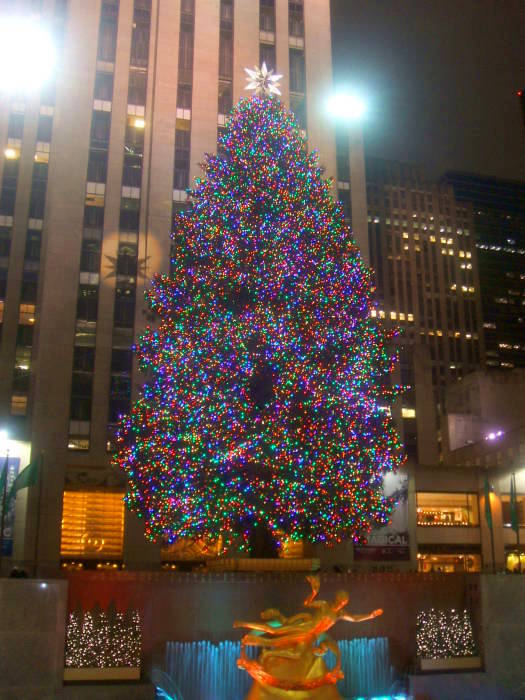

Other Poe sites in New York include some locations where he lived in Manhattan. According to the Walking Tour at poets.org, he arrived in New York on 6 April 1844 with his frail wife Virginia and they immediately moved into a boarding house at Cedar and Greenwich Streets. That's now just south of the former World Trade Center site, on a corner now occupied by a building housing O'Hara's Pub.
He immediately set about finding a job in the nearby Publisher's Row, to pay the rent be able to bring his mother-in-law, Mrs Clemm, and the cat, Catterina, from Philadelphia. He wrote to Mrs. Clemm:

Liberty Street along the south side of the former World Trade Center site, a short block north of Poe's boarding house at Greenwich and Cedar.

Looking south on Greenwich Street, the corner with Cedar Street and O'Hara's Pub is at left.
Throughout the rest of 1844 they moved from one boarding house to another looking for cheap comfort for the ailing Virginia Poe.
One place they stayed was Mrs Foster's boarding house at 4 Ann Street. This was a business street, the building probably had some business in the front and boarding rooms behind and above. This was just barely off Broadway, and Barnum's Museum at Ann and Broadway kept a brass band playing six days out of the week, and Broadway had very heavy traffic consisting largely of wagons with iron-rimmed wheels. This made the intersection one of the noisiest in New York, probably far noisier than it is even today.

The site of #4 Ann Street — within the modern building at right. View east on Ann Street from near Broadway.
In 1845, while living at 85 West 3rd Street, Poe was treated for a head cold at the Northern Dispensary, seen here. The dispensary had been built in 1831 to provide free medical care for area residents. It can be found today on the corner of Christopher Street and Waverly Place, just across east of 7th Avenue and the Christopher Street subway station.

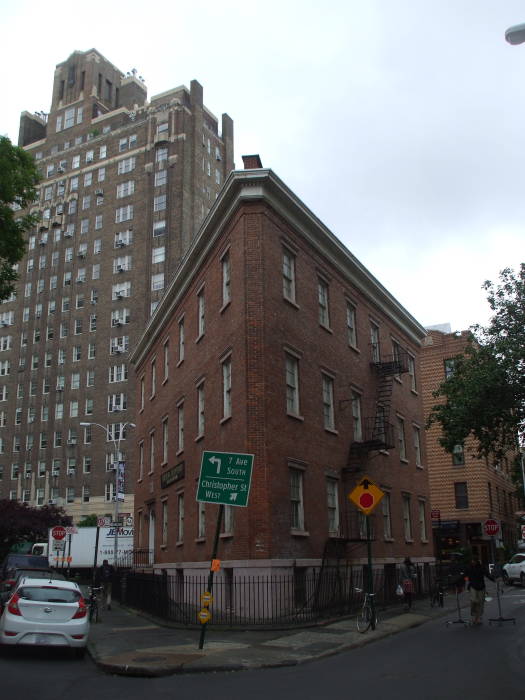
On the other hand, Edgar's Cafe on the north side of West 84th Street just west of its intersection with Broadway (255 West 84th Street, +1-212-496-6126) has a sign saying that Poe lived there from March 1844 through August 1845. Downtown boarding house or rooms in an Upper West Side mansion? I'm uncertain of the actual chronology....
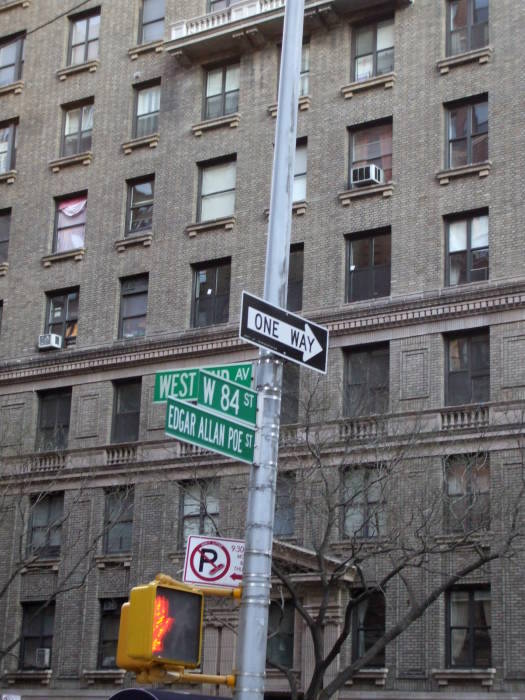
Street sign at West 84th Street, or Edgar Allan Poe Street, and Broadway.
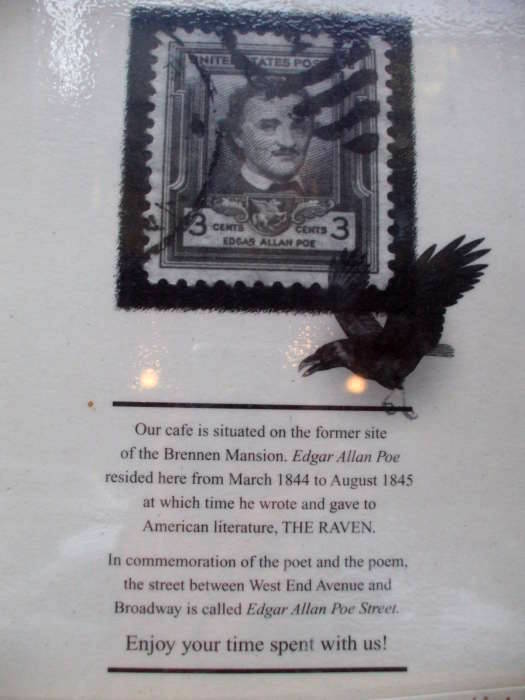
Sign outside the entrance to Edgar's Cafe on the Upper West Side.
In commemoration of the poet and the poem, the street between West End Avenue and Broadway is called Edgar Allan Poe Street.
Enjoy your time spent with us!
"Valentine's Manual of Old New York", Henry Collins Brown, New York (N.Y.)., Common Council, 1922, available from Google Books, mentions the Poe Cottage (page 246) and has a whole chapter on Poe in New York, pages 263-318. What is now the Upper West Side was then called Harsenville and Bloomingdale. That book from 1922 describes the area on pages 276-280:
The most southerly of the Bloomingdale farms was probably the Brennan farm, lying between the river and the Bloomingdale road (whose course Broadway now defines and follows) and between Eighty-third and Eighty-fifth Streets as now defined.
He found in the Brennan farm, upon a rocky knoll about midway between the river and the Bloomingdale road, a plain, old-fashioned double-frame dwelling house two stories high with eight windows on either front, flanked by a chimney at either end. Like most ancient farmhouses in these precincts, there were traditions that Washington and his generals at the time of the battle of Harlem Heights used the old house (which had not seen a coat of paint in all its career) as a headquarters. There were certainly primeval trees. Mr. Gill, who saw the house in 1880, speaks highly of its calm remove from any indication of the big nearby city.
[....]
When, in June, 1888, the city opened West Eighty-fourth Street to the river, the Brennan House was pulled down.
It goes on to say that the mantelpiece from Poe's room was removed and later presented to Columbia University, which mounted it over a dummy fireplace in the Carpenter Library in Philosophy Hall, affixing a metal plate identifying it as the mantel before which Poe wrote The Raven.

View west on Edgar Allan Poe Street (West 84th Street) from Broadway toward West End Avenue, showing the brownstones typical of the area today.
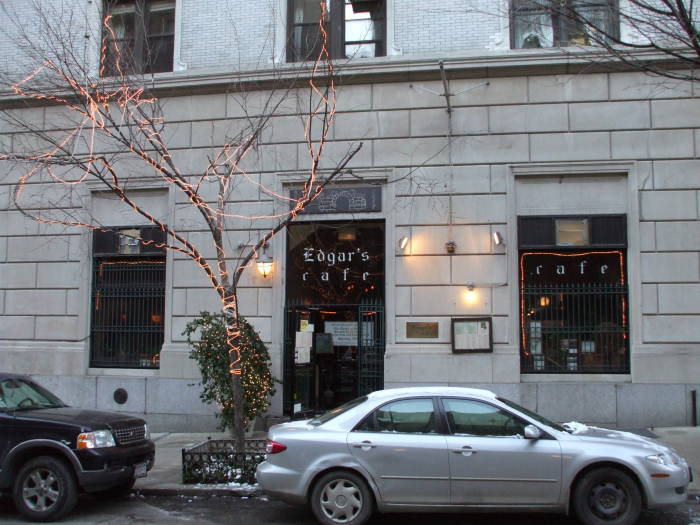
Edgar's Cafe at 255 West 84th Street and Broadway, on the site of the Brennan Mansion.
OK, back to the box on the bed.
I had purchased a number of books that I didn't want to haul back, so I looked for a shipping box.
It's easy to find boxes along the sidewalks in the evening. Restaurants and bars break down and tie together heavy cardboard boxes in which they get bottled beer, wine and liquor. They then set them out in the evening for overnight collection.
That works just fine as additional checked baggage on the airlines, just duct-tape it closed and check it through.
However, you can't mail anything through USPS if there any mention of alcohol is visible. So, I was looking for some other type of similarly sized and shaped box.
Hmmm, what's this? About the same size and shape as liquor boxes. Soft cardboard with just some small markings. Partly in Russian?
EL34
MADE IN RUSSIA
12 ФЕВ 2007
ОТК-30


Sure enough. Bowery Electrical Supply in the East Village buys Russian vacuum tubes by the case. The EL34 is a power pentode with a glass envelope and an octal base. 25 watts plate dissipation with convective cooling.
And it's packaged in the common Russian soft-pulp cardboard, as strong as if it were pre-dampened. Maybe it's what you get when you make cardboard from birch pulp. But that box would work just fine when reinforced with plenty of clear shipping tape.
If you care, and I realize that you probably don't, OTK is the abbreviation for Отдел Технического Контроля, Otdyel Tekhnicheskovo Kontrolya, or Department of Technical Control. Basically, it's Russian for MIL-STD.
I shipped my books masquerading as Russian electronics back to Indiana, and flew to Chicago just in time to catch what was described as "near-blizzard conditions". A night or two there, then home on Amtrak.
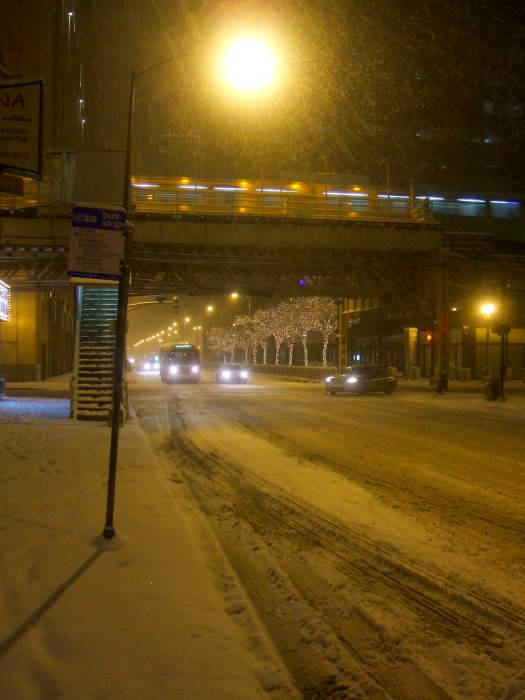
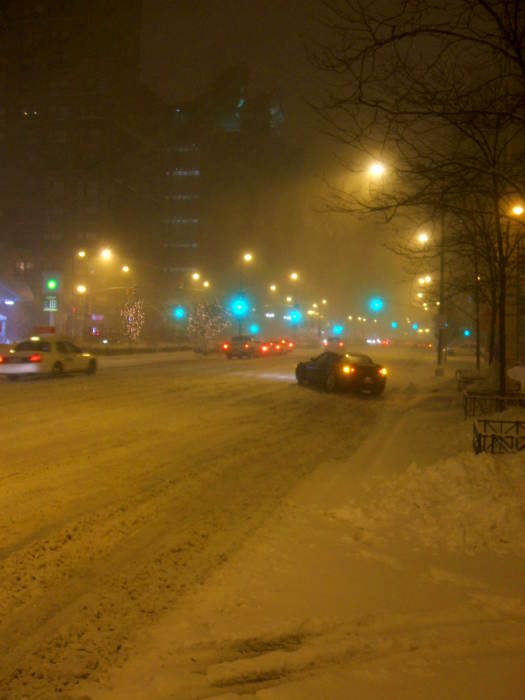
Thinking back over the trip along the NY - PHL - BAL - DC corridor, I realized that several things increase dramatically as you travel south along the east coast of the United States:
- The number of subway riders reading Bibles
- Smoking
- Advertising for strip clubs
- The current scariness of the neighborhood where Poe once lived
Assuming that these things can be linearly extrapolated, the public buses in Charleston, South Carolina probably have a hellfire-and-brimstone preacher juggling rattlesnakes at one end of the aisle, and at the other end, actual strippers handing out promotional packs of cigarettes advertising the clubs where they dance. And, the neighborhood where Poe once lived in Richmond, Virginia, must be about like Grozniy or Mogadishu.
However, the number of police helicopters circling overhead with daylight spots peaked in Baltimore. So these phenomena may not all have strictly linear or even monotonically increasing patterns.
Part of a multi-city trip: Washington DC Baltimore Philadelphia New York
Other U.S. Travel DestinationsInternational Travel
